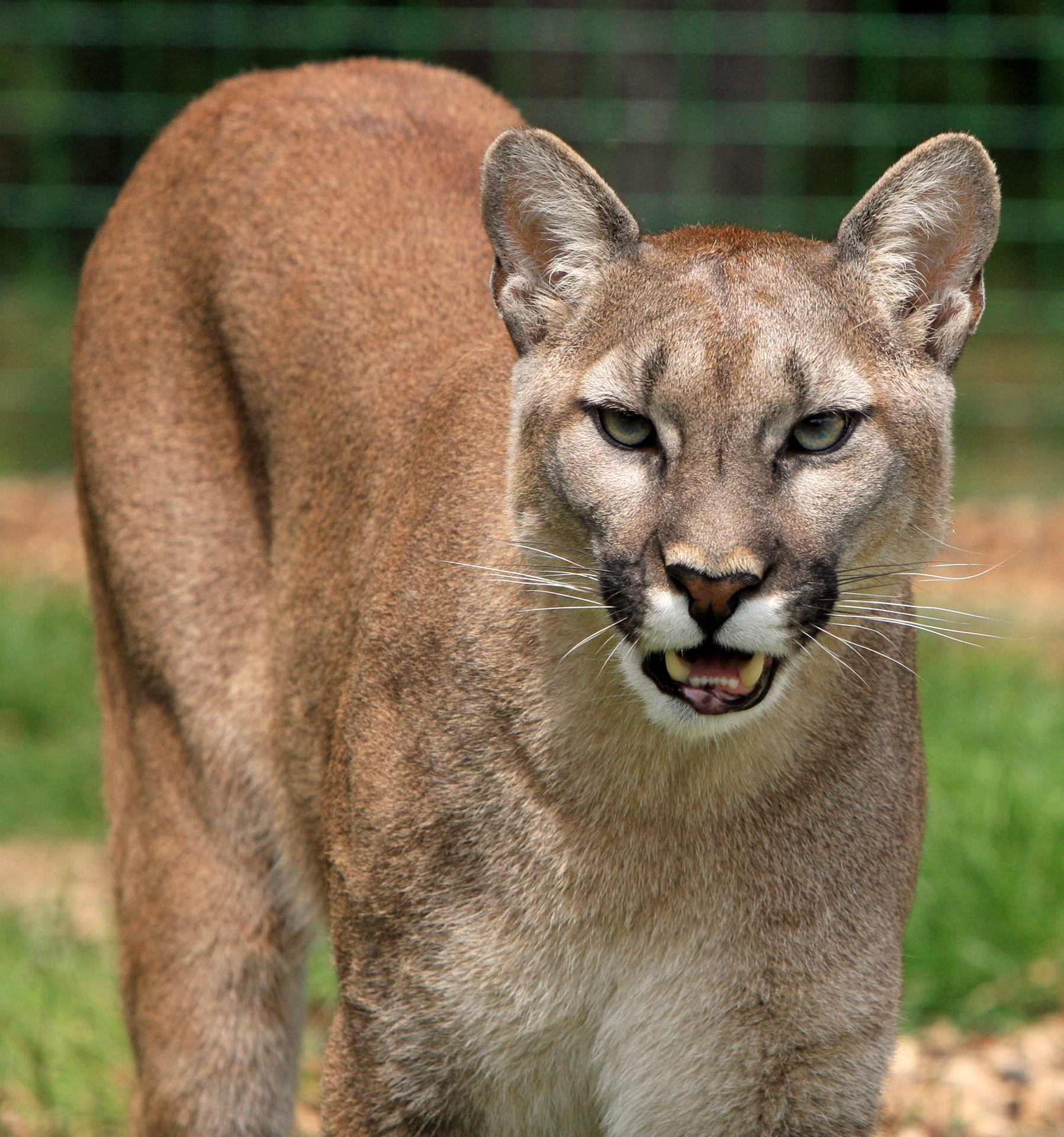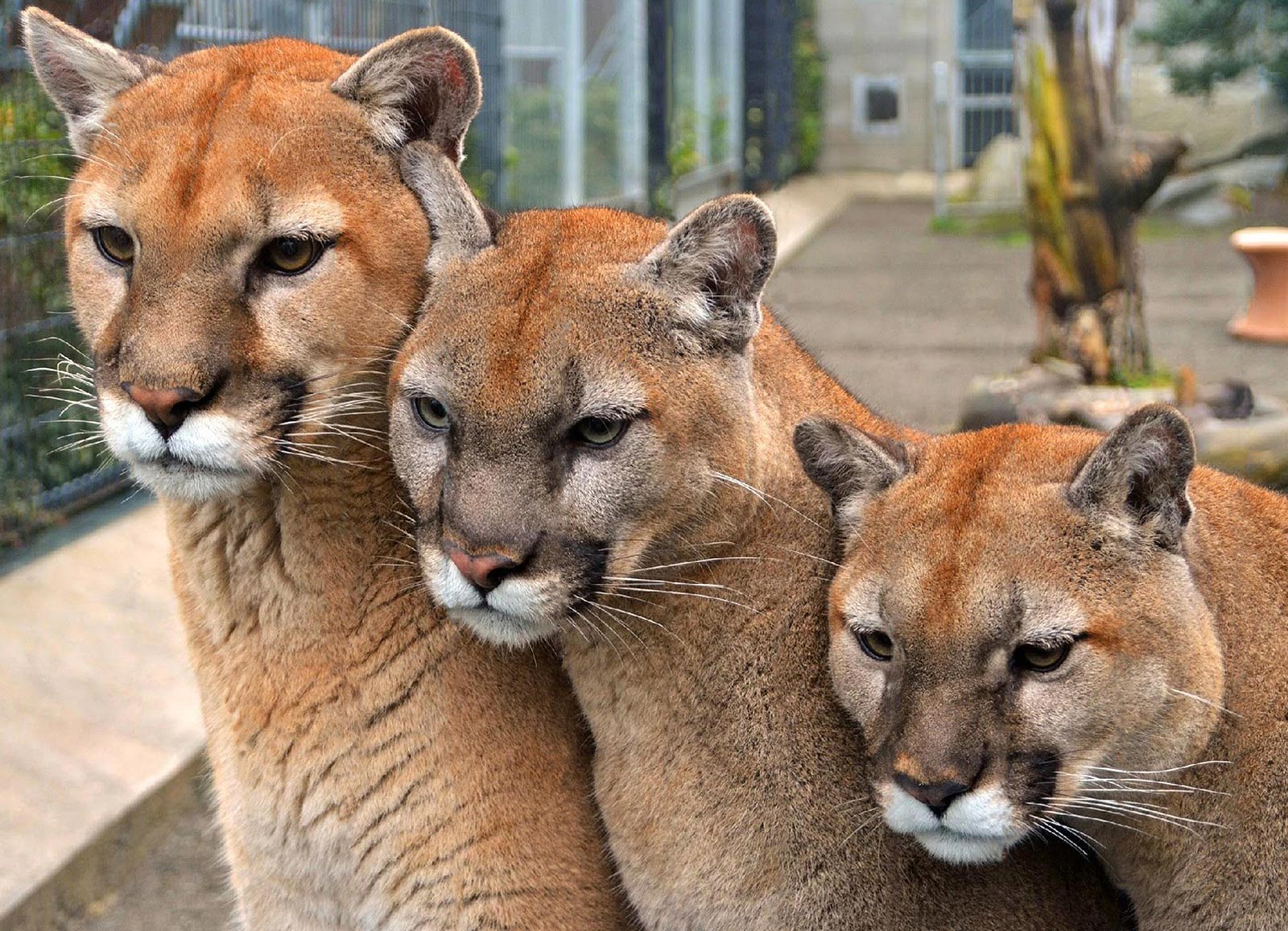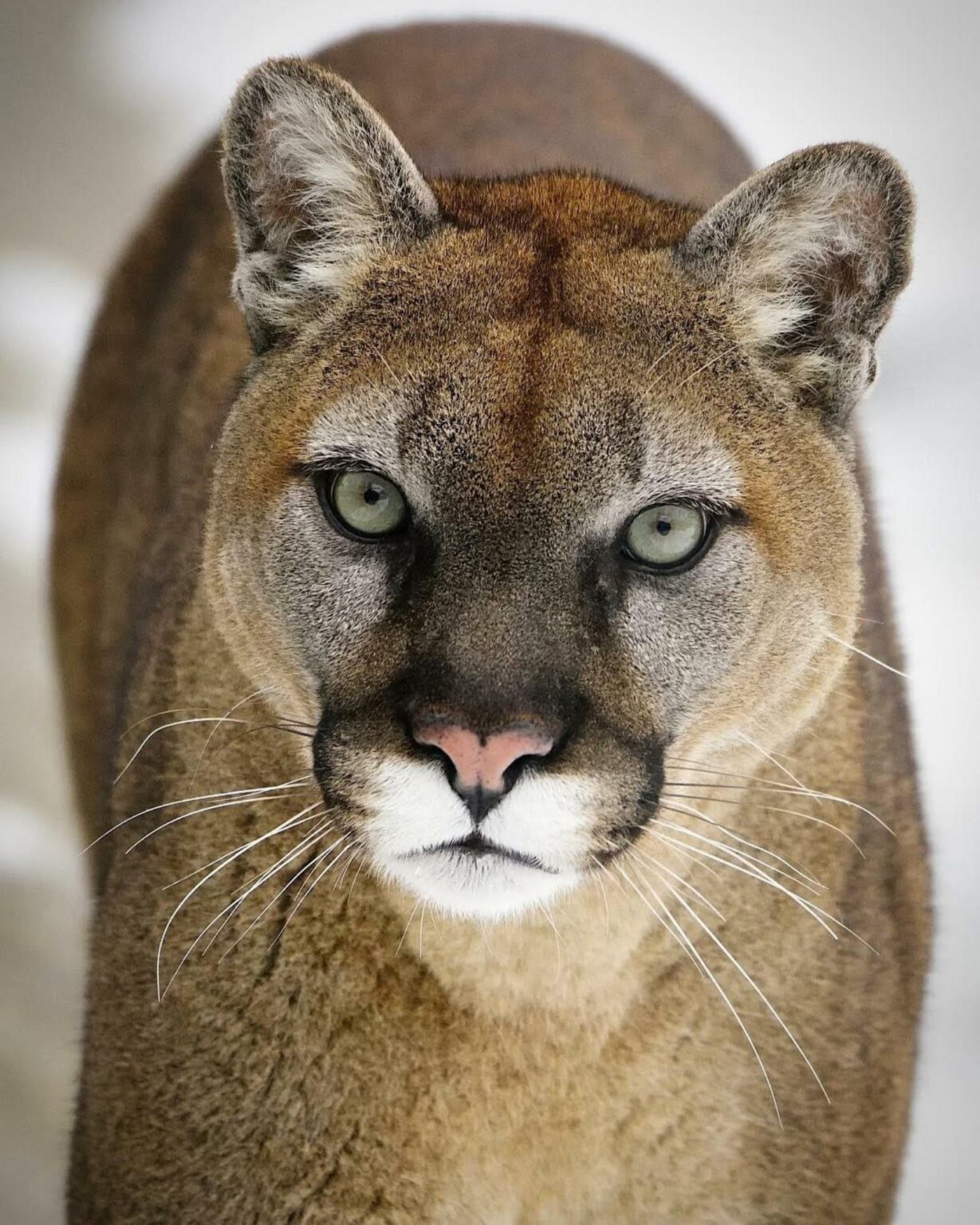Cougars With Tan Lines - Tracing Wisconsin's Elusive Wild Cats
There's something truly captivating, you know, about those whispers of wild creatures, especially when they're as mysterious as the big cats that roam, or at least used to roam, parts of our landscapes. We're talking about cougars, those powerful, sleek animals that, in a way, almost seem to carry a story etched onto their very presence, like a faint marking or a distinct shade that sets them apart – you might even say, like cougars with tan lines. It's a rather intriguing thought, isn't it, to consider what makes these creatures so unique, so much a part of the natural fabric, yet so rarely seen.
For a long stretch of time, it seemed like these magnificent animals had simply vanished from many areas where they once thrived. Their disappearance, so it goes, was a quiet kind of change that happened, oh, probably around the start of the 20th century, a time when the world was shifting in many respects. Yet, as a matter of fact, whispers and glimpses began to resurface decades later, in the middle of the century, sparking a fresh wave of curiosity about whether these elusive felines were truly making a comeback or if something else was at play.
These recent appearances, which are still quite uncommon, bring up a lot of questions about where these animals come from and how they fit into the natural environment today. It's a pretty interesting puzzle, honestly, trying to figure out if these sightings point to a genuine return of a wild population or if they are perhaps instances of individual animals that have, you know, maybe found their way out of human care. The idea of "cougars with tan lines" really just hints at this distinct, sometimes almost mythical, presence they have in our collective imagination.
- Starstroker Com
- Bills Tire Center
- Kfc Jujutsu Kaisen
- Waffle House Near Atlanta Airport
- Michael Myers Hospital Gown
Table of Contents
- The Vanishing Act - Where Did Our Cougars Go?
- Traces of the Past - Early Departures and Faint Returns of Cougars with Tan Lines
- Are They Really Back - Or Just Visiting?
- Unconfirmed Sightings - The Elusive Nature of Cougars with Tan Lines
- The Value of Wildness - What Do These Animals Mean to Us?
- Capturing the Moment - The Importance of Photos for Cougars with Tan Lines
- Looking Ahead - What's Next for Our Wild Spaces?
- Protecting the Wild - A Future for Cougars with Tan Lines
The Vanishing Act - Where Did Our Cougars Go?
You know, it’s a bit of a historical mystery, really, when you think about the cougars that once roamed freely across the landscapes of places like Wisconsin. They were, in fact, a natural part of the local animal community, a native species that belonged there, pretty much, for ages. But then, as a matter of fact, something happened, and these magnificent creatures seemed to just fade away, almost completely disappearing from the state’s wild areas. This quiet vanishing act, so it goes, occurred roughly around the early 1900s, a time when many things were changing in the natural world and how people interacted with it. It’s quite something to consider how a species that was once so much a part of the scenery could simply become, well, absent.
Traces of the Past - Early Departures and Faint Returns of Cougars with Tan Lines
So, even though these wild cougars, with their distinctive markings that could almost be described as natural tan lines from their time in the sun and shadows, were thought to be gone by about 1910, the story didn't quite end there. Interestingly enough, reports of them started to pop up again, you know, in the 1940s, decades after they were believed to have vanished entirely. These new sightings were, in a way, like faint echoes from the past, sparking a lot of talk and wonder. Were they truly wild animals making an improbable comeback, or were these perhaps, as some suggested, individual cougars that had, let’s say, found their way out of human care? It’s a pretty fascinating question, really, that has lingered for a long time, keeping the idea of these powerful creatures alive in our minds.
The history of these big cats in the region is, basically, one of long-term residence followed by a period of quiet departure. They were, to be honest, a native kind of creature, meaning they were always meant to be here, part of the local animal life. But, as a matter of fact, they were removed from the state in the early 1900s, a process often called extirpation, which just means they were locally wiped out. This means that any cougars seen today are either, you know, very rare wanderers from other places or, as was suggested for those 1940s sightings, animals that somehow escaped human care. It just goes to show how much things can change over a century or so.
- Linda Vargas Only Fans
- Cleveland Show Gus
- American Goku
- Paul Mccartney Angela Lansbury
- Niecy Nash Emmys Speech
Are They Really Back - Or Just Visiting?
This is, honestly, the big question that many folks wonder about when they hear a whisper of a cougar sighting. Are these magnificent animals, which are still quite a rare mammal in this part of the world, truly establishing a home here once more, or are they just passing through? It's a pretty exciting thought, the idea of them returning, but it also comes with a lot of practical considerations for those who keep track of wild populations. The natural resource agency, for instance, plays a really important part in trying to figure out what's actually happening out there in the wild. They work hard to confirm these things, you know, because it's not always as simple as just seeing an animal.
Unconfirmed Sightings - The Elusive Nature of Cougars with Tan Lines
One of the biggest challenges when it comes to figuring out if cougars are truly back for good, with their unique markings that some might playfully call their natural tan lines, is getting solid proof. The natural resource agency, for example, has not yet found firm evidence of a group of cougars that are living and reproducing here. This means they haven't seen signs that show new generations are being born and growing up in the wild, which is what you'd expect from a settled population. So, while there are reports and even photos, as a matter of fact, those don't always point to a stable, breeding group. It makes these animals seem even more mysterious, doesn't it?
The lack of confirmed breeding activity means that each sighting, while exciting, is still just that – a sighting of an individual animal. It could be a young male, you know, wandering far from its birthplace in search of new territory, which cougars are known to do. Or, it might be, as has been suggested in the past, an animal that was once kept by people and somehow got free. This makes the whole situation very, very interesting, because you're constantly wondering about the true origin story of each cougar that makes an appearance. It keeps the mystery of these rare animals alive, pretty much, for everyone who cares about them.
The Value of Wildness - What Do These Animals Mean to Us?
Thinking about creatures like cougars, especially those rare ones with their distinct "tan lines" of natural coloring, really makes you consider what wildness means to us. There's a certain feeling of wonder, honestly, when you know that such powerful and elusive animals might be out there, even if you never see them yourself. Their presence, or even just the possibility of their presence, reminds us that there are still parts of the world that are untamed and full of natural secrets. It connects us, in a way, to a bigger, older story about the land and its original inhabitants, which is quite a profound thing, if you ask me.
These rare animals, like the cougar, represent a kind of wild beauty that many people cherish. It’s not just about seeing them, but about the idea of them existing, living their lives in places we might never go. This feeling, you know, inspires a lot of folks to care more about the natural world and to think about how we can help protect it. It makes you realize that every creature, no matter how rare or hidden, has a place and a purpose in the grand scheme of things. And, as a matter of fact, knowing they are out there, even if just occasionally, adds a richness to our collective experience of nature.
Capturing the Moment - The Importance of Photos for Cougars with Tan Lines
When it comes to rare species like cougars, or even other amazing creatures such as whooping cranes, moose, and martens, getting a picture can be a really big deal. Photos of these animals are incredibly helpful, you know, because they give us confirmed spots where these rare species have been. It’s like getting a little piece of solid proof, a snapshot of their presence, which is very valuable for those who study and protect them. These images, which might show a cougar with its natural, almost sun-kissed "tan lines" of fur, help us map out where they are moving and living, even if just temporarily. It's a pretty direct way to gather information about animals that are so good at staying hidden.
Beyond just confirming locations, these project photos serve an even broader purpose. They are also used for, let's say, teaching people and reaching out to the community. These pictures help everyone, you know, learn more about these special animals and why they matter. When people see a clear photo of a rare cougar, for instance, it can really bring the animal's story to life and encourage folks to care about its future. It’s a way of helping the community understand and appreciate the wild creatures that share our planet, pretty much, making conservation feel more personal and real to a lot of people.
The act of capturing these images, whether by trained wildlife professionals or, sometimes, by observant members of the public, contributes greatly to our collective knowledge. It’s a bit like building a puzzle, with each photo adding another piece to the picture of where these animals are and what they are doing. This kind of information, honestly, is absolutely vital for making good decisions about how to look after these creatures and their homes. Without these visual records, it would be much harder to keep tabs on the very rare mammals that grace our wild spaces, like those elusive cougars with their distinct natural markings.
Looking Ahead - What's Next for Our Wild Spaces?
So, considering all we've talked about, it makes you wonder what the future holds for our wild areas and the creatures that call them home. The story of the cougar, from its disappearance to its occasional reappearance, is a powerful reminder that natural systems are always, you know, in motion and changing. What we do today, or what we choose not to do, can have a really big impact on what kind of wildness remains for future generations. It’s a pretty big responsibility, honestly, to think about how we can best support these natural processes and the animals that are part of them.
The ongoing efforts to understand and track rare species are, basically, a continuous process. It involves careful observation, gathering evidence, and sharing what we learn with others. This kind of work helps us make informed choices about how to manage our natural resources, ensuring that places remain suitable for a wide variety of life. It’s a hopeful thought, really, that through these efforts, we might see more and more of these amazing animals, perhaps even establishing themselves more firmly in their native lands. The future of our wild spaces is, in a way, something we all help to shape, one decision at a time.
Protecting the Wild - A Future for Cougars with Tan Lines
When we think about protecting the wild, especially for animals as rare as cougars, those powerful creatures with their distinctive, almost sun-kissed fur that could be called their natural tan lines, it really comes down to a few
- Bishop Crites Funeral Home Greenbrier Ar
- Mass Pike Traffic Right Now
- Starstroker Com
- Exploring The World Of Roblox Condo Games A Thrilling Playground For Creativity
- Antonetta Stevens

Cougar Free Stock Photo - Public Domain Pictures

Cougar - Cougar Mountain Zoo

Cougar - Cougar Mountain Zoo